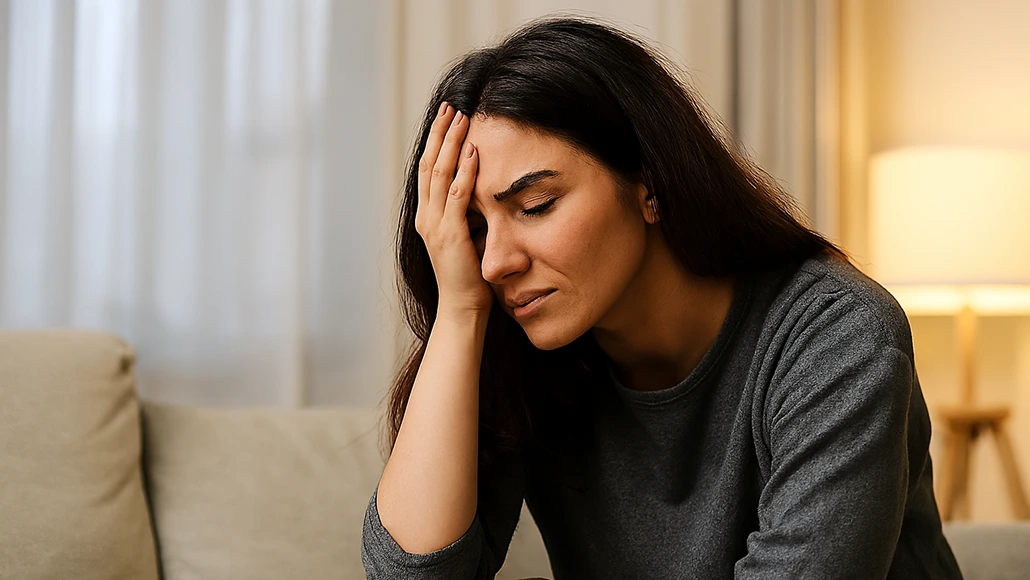Anxiety is something everyone feels at times. Whether it’s before a big test, a job interview, or a stressful life event, anxiety is a natural response to pressure. But for some people, anxiety goes beyond temporary stress and becomes a daily struggle that affects every part of life.
Two common types of anxiety are Generalized Anxiety Disorder (GAD) and situational anxiety. While they share some similarities, they are very different in how they show up, how long they last, and how they affect daily living. Understanding the key differences helps individuals and families recognize when professional support is needed.
What Is Generalized Anxiety Disorder (GAD)?
Generalized Anxiety Disorder is a chronic condition that causes persistent and excessive worry about many aspects of life. People with GAD often worry about things like health, work, relationships, or finances—even when there is no immediate reason to feel anxious.
According to the Anxiety and Depression Association of America (ADAA), GAD affects about 6.8 million adults in the United States every year, yet only 43% receive treatment【ADAA, 2022】.
Key Features of GAD
- Worrying almost every day for at least six months
- Anxiety that is difficult to control
- Symptoms such as restlessness, fatigue, trouble concentrating, irritability, muscle tension, and sleep problems
- Anxiety that interferes with daily activities and quality of life
What Is Situational Anxiety?
Situational anxiety is temporary anxiety triggered by specific events or circumstances. It is not a chronic condition but rather a response to a stressful situation. Common triggers include public speaking, job interviews, major exams, or medical procedures.
Unlike GAD, situational anxiety usually fades once the event is over or the stressor is removed.
Key Features of Situational Anxiety
- Anxiety tied to specific events or environments
- Symptoms such as rapid heartbeat, sweating, shortness of breath, or nervousness before or during the event
- Anxiety that goes away after the situation resolves
- Does not cause ongoing impairment in daily life
Comparing GAD and Situational Anxiety
Duration and Persistence
- GAD: Lasts for months or years, with anxiety present most of the time.
- Situational Anxiety: Short-term and fades once the stressful event passes.
Triggers
- GAD: Worries about a wide range of topics, often without a clear trigger.
- Situational Anxiety: Triggered by specific situations, such as giving a speech or attending a doctor’s appointment.
Impact on Daily Life
- GAD: Interferes with work, school, relationships, and overall well-being.
- Situational Anxiety: May cause temporary distress but usually does not disrupt daily life beyond the event.
Physical Symptoms
Both GAD and situational anxiety can cause physical symptoms such as racing heartbeat, sweating, or stomach issues. However, in GAD, these symptoms occur more frequently and persistently.
The Role of Stress Response
Anxiety is part of the body’s “fight or flight” response. For situational anxiety, this stress response activates when facing a challenge, then calms once the event is over. In GAD, however, the body stays in a heightened state of worry and tension even without a clear threat.
Research from the National Institute of Mental Health (NIMH) shows that people with GAD often have overactive stress responses, making it difficult to relax or feel safe【NIMH, 2022】.
When Situational Anxiety Becomes a Disorder
While situational anxiety is usually temporary, it can sometimes develop into an anxiety disorder if:
- The fear of situations becomes overwhelming and leads to avoidance
- Anxiety occurs in multiple settings, not just one specific situation
- Symptoms continue for months and affect quality of life
For example, fear of public speaking is common, but if someone avoids school or career opportunities because of it, this could signal social anxiety disorder rather than simple situational anxiety.
Treatment for Generalized Anxiety Disorder
Because GAD is ongoing, treatment often combines therapy, medication, and lifestyle changes.
- Cognitive Behavioral Therapy (CBT): Helps people identify and change patterns of worry.
- Medication: Antidepressants and anti-anxiety medications may help regulate brain chemistry.
- Lifestyle Support: Exercise, mindfulness, and good sleep habits can reduce symptoms.
With treatment, many people with GAD see significant improvement in their quality of life.
Managing Situational Anxiety
Situational anxiety often responds well to coping strategies without long-term treatment. Some helpful tools include:
- Breathing exercises to calm the body during stressful events
- Preparation and practice, such as rehearsing before a presentation
- Mindfulness or meditation to stay grounded in the moment
- Positive self-talk to replace anxious thoughts with supportive ones
In some cases, short-term therapy or coaching can help build confidence in managing specific situations.
Supporting Someone with Anxiety
Whether a loved one struggles with GAD or situational anxiety, support makes a difference. Families and friends can help by:
- Listening without judgment
- Encouraging healthy coping skills
- Suggesting professional help when anxiety is severe or persistent
- Celebrating small victories in managing stress
Reducing stigma is also important. Anxiety is not a weakness—it is a mental health challenge that deserves compassion and treatment.
Conclusion
Generalized Anxiety Disorder and situational anxiety may look similar at first, but their differences are clear. GAD is a chronic condition marked by persistent worry and daily impairment, while situational anxiety is temporary and tied to specific events.
Recognizing these distinctions helps individuals seek the right kind of support. With early intervention, therapy, and healthy coping skills, both forms of anxiety can be managed effectively.


















